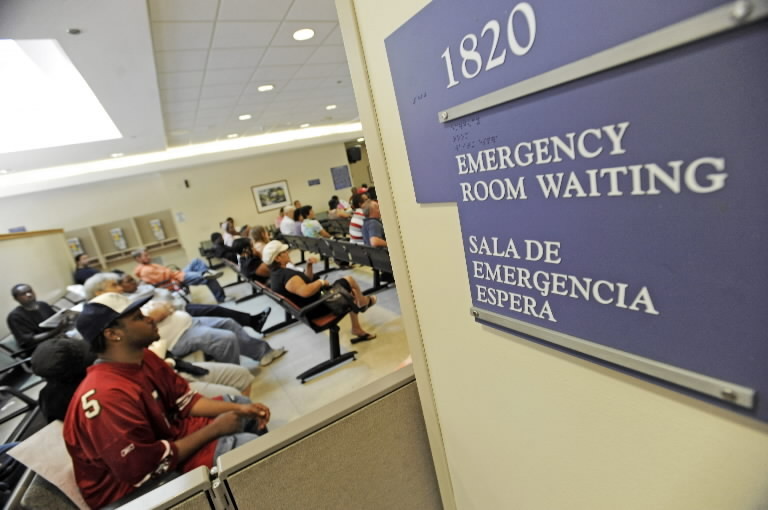
[Baltimore Sun] When will Maryland get serious about reducing ER wait times? | STAFF COMMENTARY
At the urging of state lawmakers, the Maryland Hospital Association last summer formed a 28-member workgroup to determine the root causes of Maryland’s appallingly long emergency room wait times. The report was due at the start of the Maryland General Assembly’s annual 90-day session. It did not arrive until mid-March, when it’s far too late for legislators to take up any serious remedies.
If there is a better metaphor for Maryland’s abysmal ER wait times — which hover around 4 hours and 7 minutes from arrival to departure, on average — and the long struggle to improve them, we don’t know what it could be. Of course the report was late. And of course its final product includes no fewer than 17 policies to consider and a call for a two-year task force.
Paging the fictional Dr. Gregory House of the “House M.D.” television show. It appears we’re in need of his no-nonsense, cut-to-the-chase diagnostic skills.
That’s not to suggest that the task force report doesn’t have plenty of interesting ideas. It’s filled with them. But it lacks the urgency of the emergency this situation truly is. It’s shameful that no state has longer ER wait times than Maryland, home not only to Johns Hopkins Health System but the University of Maryland Medical Center and the Centers for Medicare and Medicaid Services, the federal agency that actually keeps track of those wait times. It’s even worse that it’s been this way since at least 2015 and that the situation disproportionately afflicts Black residents, who studies show are twice as likely to visit an ER than their white or Hispanic counterparts.
We recognize that the ER wait time problem is complex and a byproduct of a dysfunctional health care system that defaults to hospital emergency rooms when people don’t have primary care physicians or the resources to pay for health care. To accomplish any serious reforms in Maryland — a state with lots of medical experts from Hopkins on down and, hence, special interest conflicts — advocates are going to have to make this as simple and direct as possible. And it can probably start with behavioral health care. Too often, emergency rooms are the place where people in desperate need of psychiatric care show up, but the hospitals don’t have the inpatient psychiatric beds to accommodate them.
The result is a kind of traffic jam. People in a mental health crisis need help, but there’s no place for them to go. It speaks to a lack of resources, not just in hospital beds, but in outpatient psychiatric care. This also includes a population, often homeless, often substance addicted, who has no family or financial support. Maryland needs more inpatient care, yet when there’s a proposal on the table like House Bill 804, which would have made it easier to create a new psychiatric facility (or add psychiatric treatment to an existing health care facility), it was opposed by the Maryland Hospital Association and never made it out of committee. Their argument? They claimed it might reduce the quality of care. Apparently, no care is better.
There are other recommendations in the task force report that deserve to be pursued. Workforce shortages — particularly among emergency room nurses, imaging technicians and social workers — can be overcome if the state gets serious about recruiting, training and paying them what they are worth. Providing more outreach services like mobile crisis units would surely help as well. Neither should be especially controversial. As for those recommendations that are, like suspending the certificate of need for new psychiatric treatment centers? Well, it’s time Gov. Wes Moore and Health Secretary Laura Herrara Scott asserted themselves a bit more forcefully into this fray, rather than leaving it to all those special interest lobbyists in Annapolis to set the medical agenda. This may be a challenging dilemma but it’s not beyond repair — it just requires a serious shot of leadership.
Baltimore Sun editorial writers offer opinions and analysis on news and issues relevant to readers. They operate separately from the newsroom.
